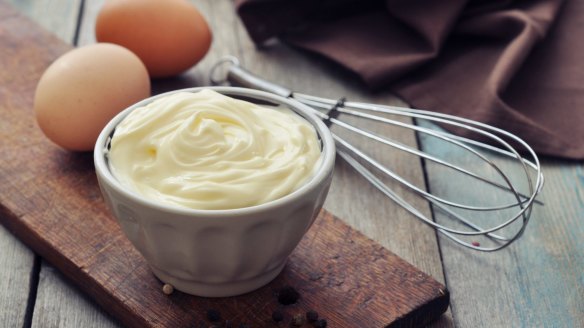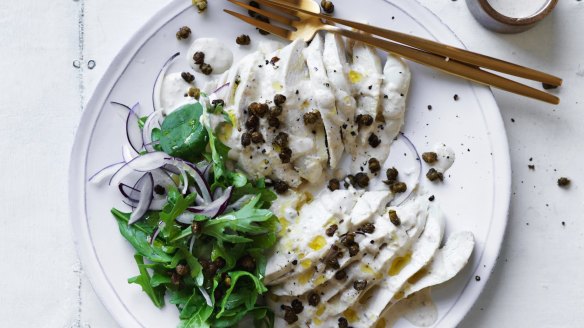How to stop mayonnaise from splitting and the correct temperature to serve long black coffee

Starting this week, Brain Food alternates between deep dives into ingredients of the moment and answering readers' burning culinary questions.
My homemade mayonnaise frequently splits. Why is it so? How do I fix it? D. Le Cornu
Mayonnaise is an emulsion, a mixture of two liquids (oil and lemon juice or vinegar) that normally can't be combined, brought together by egg yolks. Yolks contain lecithin, which has the magical property of allowing the two liquids to bind. Start by whisking lemon juice or vinegar with egg yolks, preferably free-range. Then painstakingly add the oil drop by drop. You have better control of this process if you use a hand whisk, beating rapidly and smoothly. If you add too much oil before it has had a chance to emulsify, the mix will split, with pools of oil forming on top. If this happens, try gently whisking in two teaspoons of boiling water, which can kickstart the emulsification. If this doesn't work, separate another egg yolk into a fresh bowl and start the process again, adding your split mayo mix drop by drop. Or you can cheat and put a tablespoon of commercial egg mayo into a bowl and slowly whisk in your split mayo mix. Homemade mayo enriches sandwiches, salads, and vegetable dishes and forms the base of a fast aioli or tartare sauce. Being a raw egg dish, there is a risk of salmonella, so always keep your mayo (and dishes made with it) in the fridge and discard after four days.

Why do baristas make long black coffee so hot? M. Shuttleworth
There is great joy to be had from a shot of beautifully extracted espresso that has had a little hot (but not boiling) water added to it. You can swirl the coffee around in your mouth and pull apart the aromas as you swallow it. Long blacks served in cafes use water straight from the hot water tap, about 95C. That is way too hot to allow you to enjoy the coffee, and that amount of water really dilutes the coffee. In the perfect world, the barista would add the hot water, tempering it with a little cold, to make it around 75C, and then add the shot of coffee on top. If you have a local cafe, you could teach them the way you like your long black and then have them name it after you. I'll have a Shuttleworth, thanks.
Letters
Recently we ran a piece about bay leaves, which prompted several readers to write in. K. Stokes wrote: "Thank you for your article on bay leaves. If your readers do plant a bay tree, they should remember the old saying, 'Evil flourishes like the green bay tree.'" Oh, dear! C. Rush likes to use the fresh young leaves in a salad, while J. Parker writes, "I've been using bay leaves for ages, and they add such depth and beautiful flavour to so many different things. I also find that they are better dried … somehow the flavour is richer than using them fresh."
Send your vexing culinary conundrums or ingredient suggestions to brainfood@richardcornish.com.au or Twitter and Insta @Foodcornish
Appears in these collections
- More:
- Food
- Brain food
